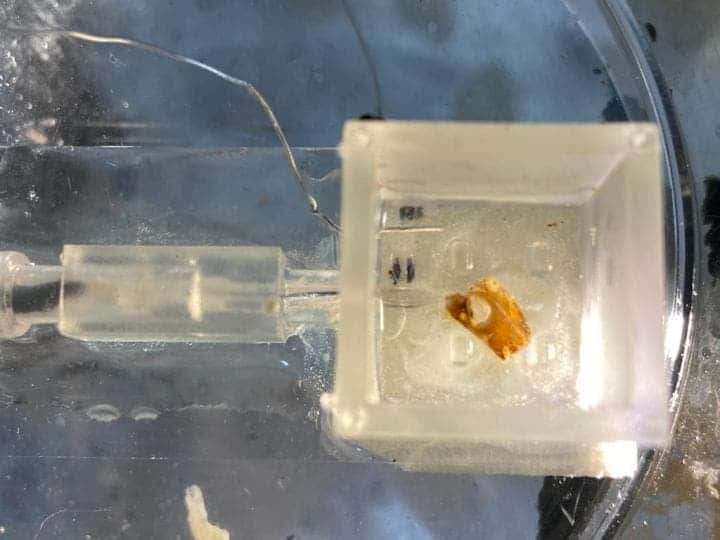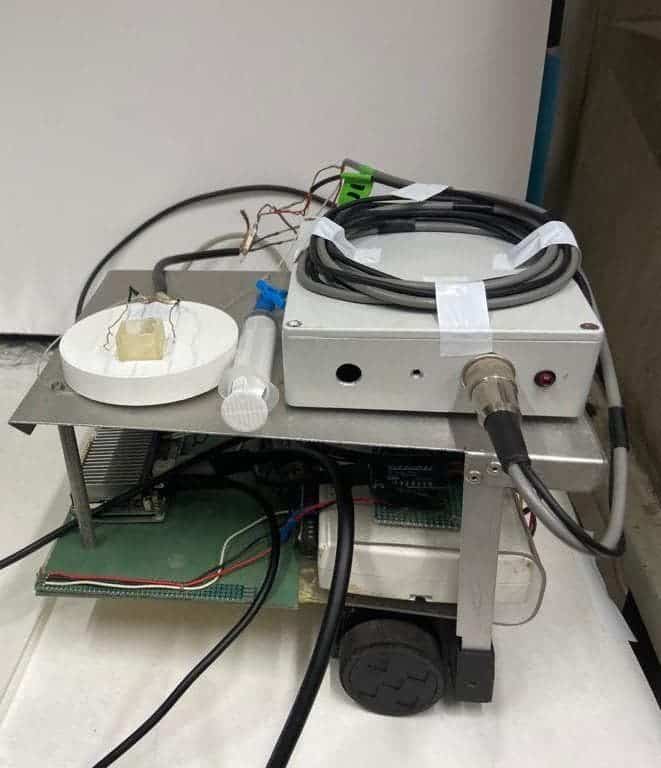
In an unprecedented integration of biological systems into technological systems, researchers in Israel showed how the senses of a dead locust can be used as a sensor for a robot. Instead of a microphone, the robot used the dead insect’s ears to detect sounds and respond accordingly.
“We chose the sense of hearing, because it can be easily compared to existing technologies, in contrast to the sense of smell, for example, where the challenge is much greater,” says Dr. Ben Maoz of Tel Aviv University.
Maoz closely worked with Prof. Amir Ayali, who is an expert in locusts working at the university’s School of Zoology. Previously, Ayali’s lab was able to isolate and characterize locust ears.
This expertise proved invaluable when the researchers removed the dead locust ear and kept it functional for long enough to be connected to a robot developed by Maoz and colleagues. The locust ear remained functional despite being removed from the insect’s body thanks to a special device called Ear-on-a-Chip that supplies oxygen and food to the organ. Wires connected to the output allow electrical signals to be taken out of the locust ear and amplified for transmission to the robot’s processing unit.

During experiments, when the researchers clapped once, the locust’s ear picked up the sound, whose signal commanded the robot to move forward, a pre-programmed instruction. When the robot heard two claps, it moved backward.
But is the locust ear better than a microphone? That’s beside the point. The purpose of the study was to push the boundaries of what we can do in terms of integrating biological systems into technological systems or vice-versa.
Our technology might seem impressive, but that’s really nothing compared to biological systems that are the product of more than a billion years of evolution. The human brain, the most complex information processing unit in the known universe, uses less energy than a lightbulb. One single gram of DNA can store 215 petabytes (215 million gigabytes) of data. Clearly, there’s enormous potential in integrating biology into our technology.
“It should be understood that biological systems expend negligible energy compared to electronic systems. They are miniature, and therefore also extremely economical and efficient,” Maoz said.
“The principle we have demonstrated can be used and applied to other senses, such as smell, sight and touch. For example, some animals have amazing abilities to detect explosives or drugs; the creation of a robot with a biological nose could help us preserve human life and identify criminals in a way that is not possible today. Some animals know how to detect diseases. Others can sense earthquakes. The sky is the limit,” he added.
The findings appeared in the journal Sensors.


